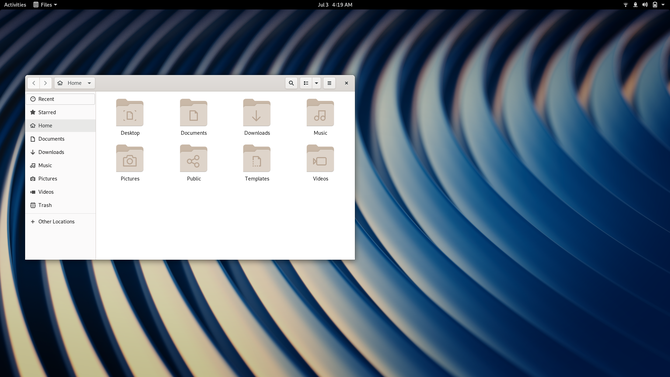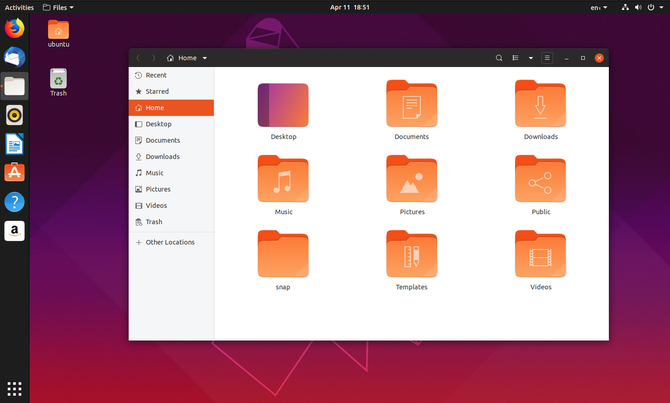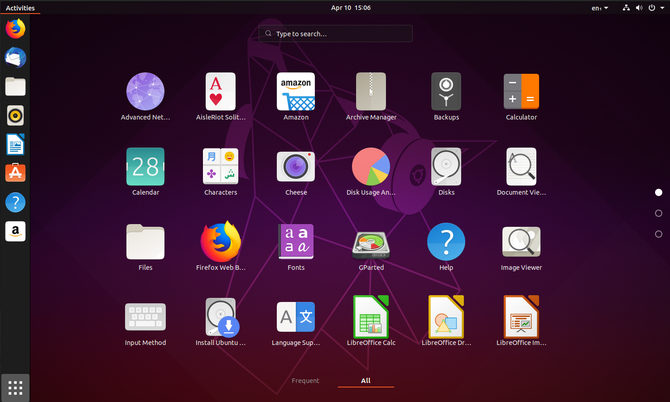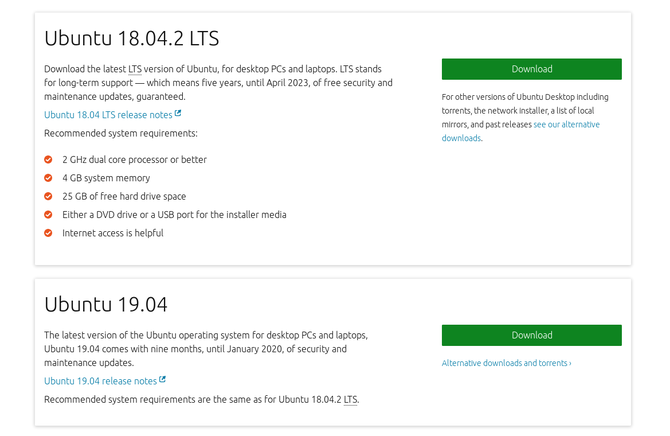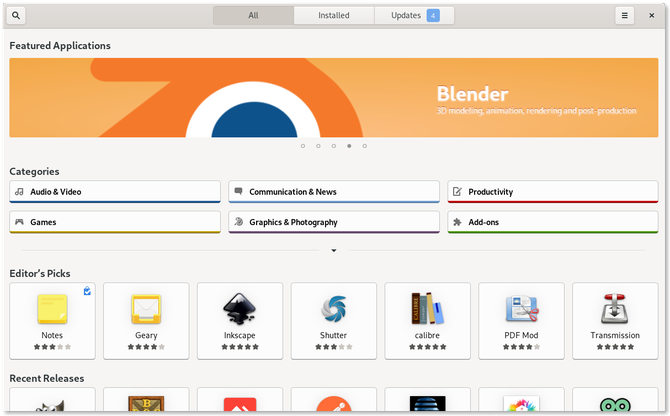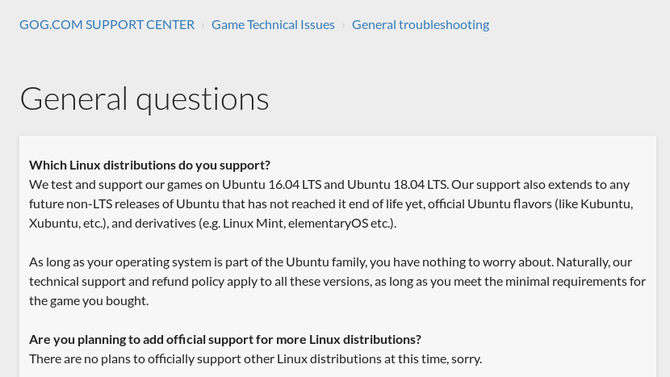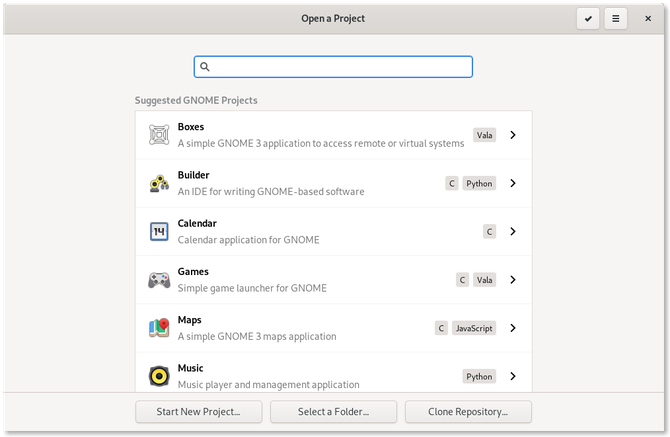Fedora and Ubuntu are two of the most popular and well-supported Linux-based desktop operating systems. Both have been around for well over a decade and come from separate corners of the world, but the differences between them are rather nuanced.
So between Fedora vs Ubuntu, which is right for you?
How Fedora and Ubuntu Came to Be
Fedora is a free and open source Linux-based operating system that has been around since 2003. Red Hat, the world's largest open source company prior to being bought by IBM, sponsors the project. Fedora serves as the foundation for Red Hat Enterprise Linux, a version of Linux intended for companies and servers rather than personal desktop use.
Ubuntu became the most popular Linux-based operating system not long after launching in 2004. Billionaire Mark Shuttleworth created a company called Canonical whose purpose was to create a version of Linux for general computer users. Ubuntu was that desktop.
The Fedora Desktop
For several years, Fedora's tagline has been "Freedom. Friends. Features. First." The project ships a desktop that is almost entirely free of proprietary code, with the exception being binary drivers found in the Linux kernel that enable Fedora to support the hardware found in most laptops.
Fedora developers focus on creating features that go out to the broader Linux ecosystem. For that reason, Fedora is often a showcase for functionality that alternatives will get in the upcoming months (or in some cases, such as the use of the Wayland display server, years).
The Ubuntu Desktop
Ubuntu's tagline was originally "Linux for Human Beings". The goal was to create a desktop aimed at everyday computer users that could compete with Windows and Mac OS X. Canonical tried to hide the more technical aspects of Linux and provide an experience that just works out of the box.
Early versions of Ubuntu came with a straightforward installer with the ability to sample the desktop beforehand, plus easy ways to install Adobe Flash and multimedia codecs. Canonical also went to great efforts to create a unique desktop interface, known as Unity, that would stand out to consumers and PC vendors. The company even tried its hand at bringing Linux to phones.
In recent years, Canonical has given up on most of these projects and has changed its focus to the cloud.
What's It Like to Use Fedora or Ubuntu?
When you pit Fedora vs Ubuntu, you will end up using same desktop interface by default. How you launch apps and manage windows is virtually the same.
Fedora doesn't make changes to this interface, the GNOME desktop environment, so what you see on Fedora matches what you see on GNOME.org.
Ubuntu provides its own themes and comes with an app dock that's always visible (pictured above).
Which looks better is subjective, but on Ubuntu you will encounter more inconsistencies.
Ease of Use
While Ubuntu began as a more user friendly desktop, that difference between the two has eroded. Things in Fedora are now as likely to "just work," except when it comes to proprietary hardware drivers.
Ubuntu benefits from having a larger support community, which can make it easier to troubleshoot issues. But Fedora's community is large enough that this isn't that big of a deal.
Release Cycle and Support Period
New versions of Fedora come out roughly every six months, with delays not uncommon. Each release receives a little more than a year of support.
Ubuntu comes in two versions. Standard releases come every six months and receive nine months of support. Long-term support releases launch every two years and receive five years of support.
Flavors and Spins
Neither Fedora nor Ubuntu force you to use GNOME. There are many different desktop environments to choose from. You can use one of these alternatives on Fedora or Ubuntu by downloading different versions of either project.
On Fedora, variants are known as Spins and have names such as Fedora KDE Plasma Desktop Edition and Fedora Xfce Edition. The same editions of Ubuntu, known as flavors, go by the names Kubuntu and Xubuntu. Other versions of Ubuntu use a different naming scheme, such as Ubuntu MATE and Ubuntu Budgie.
Getting Apps
Whether you use Fedora or Ubuntu, you will still turn to GNOME Software to download apps. It is one of several apps stores available for Linux.
Most apps are free and open source. Ubuntu has long mixed in proprietary software, making it easier to find apps like Steam and Spotify with a quick search. Though thanks to Flathub integration, such apps are now easy to install on Fedora, too.
Ubuntu's repositories contain more software than Fedora's, but the Linux apps people are most familiar with tend to be available for both.
Package Management
In the Linux world, software is distributed in the form of digital packages. This includes apps, but it also means background libraries and other components.
Fedora uses the RPM package format, whereas Ubuntu uses DEB. You can download packages via the command line. If you do, you will use DNF in Fedora or APT in Ubuntu. Both tools are similar, but people tend to develop a preference over time.
"Universal" Package Formats
There's no one package format that works across every version of Linux, but developers are working hard to change this. Unfortunately, Fedora and Ubuntu default to a different "universal" package format. Fedora uses Flatpak, and Ubuntu uses Snap packages.
Flatpak seems to have received wider adoption among various Linux-based desktops, so you may find software available as a Flatpak but not a Snap package. On the flip side, since Ubuntu is the most popular and actively pursues developers, there's also a bit of software available only in the Snap format. Since these are universal formats, it's possible to install Flatpaks on Ubuntu and Snap packages on Fedora, it just takes a little extra work.
Version Numbers
Fedora tends to update the software in its repositories more quickly than Ubuntu. You may receive major updates to your apps alongside system updates, rather than having to wait six months for the updated versions that come with the next edition of Ubuntu.
Likewise, when a new version of Fedora lands, it's likely to already include newer software than what Ubuntu provides to begin with. Sometimes Ubuntu will ship older software due to the tweaks or other changes it introduces and needs to maintain.
Playing Games
If you're a gamer, Ubuntu's going to provide you with an easier time. Platforms like Steam and GOG.com explicitly support Ubuntu, even though it's possible to run games from both on Fedora.
PC games also tend to be proprietary and depend on proprietary services, which are typically easier to get up and running on Ubuntu. Yet that's starting to change again thanks to Flathub, which provides proprietary apps for Fedora without Fedora having to distribute such code itself.
Ubuntu users also benefit from proprietary graphics drivers that are easier to install.
Creating Software
Fedora offers an excellent environment for developers. You get a workspace with relatively few changes to upstream code and faster access to newer software. What you learn on Fedora is also relevant to CentOS and Red Hat Enterprise Linux, which sysadmins encounter often.
A few upcoming Fedora variants focus on containers, such as Fedora CoreOS and Fedora Silverblue. Developers will gain perks such as the ability to easily install, test, and configure separate version numbers of the same app.
Ubuntu is compelling for different reasons. Many tinkerers and makers use Ubuntu, and Ubuntu is more likely to appear on non-enterprise servers. Canonical is making a big push to get Ubuntu on more internet of Things devices.
At the end of the day, Linux as a whole is regarded as ideal for developers, and either Fedora or Ubuntu will serve you fine.
Running Fedora or Ubuntu on a Server
There are desktop and server versions of both Fedora and Ubuntu. While you can install Fedora on a server, it's not ideal. New versions come out quickly and aren't supported for long, making Fedora poorly suited for machines that are meant to be stable for lengthy periods of time. If you feel more comfortable with Fedora than Ubuntu, consider running CentOS, which is a non-commercial version of Red Hat Enterprise Linux.
Fedora vs. Ubuntu: Which Is Right for You?
Fedora is a consistent known quantity. Roughly every six months, you will get a polished GNOME desktop offering the latest free software world has to offer.
Ubuntu has provided more of a wild ride over the years. Interfaces and services have come and gone. Sometimes Canonical makes commercial-driven decisions that receives pushback from the community. And frankly, Ubuntu is no longer the easiest version of Linux out there. But the project continues to have the largest brand awareness and receives the most support from outside the Linux community.
At the end of the day, if you're new to Linux, you can't go wrong with either Fedora or Ubuntu. But if you want to venture out, there are many more Linux-based operating systems to pick from.


